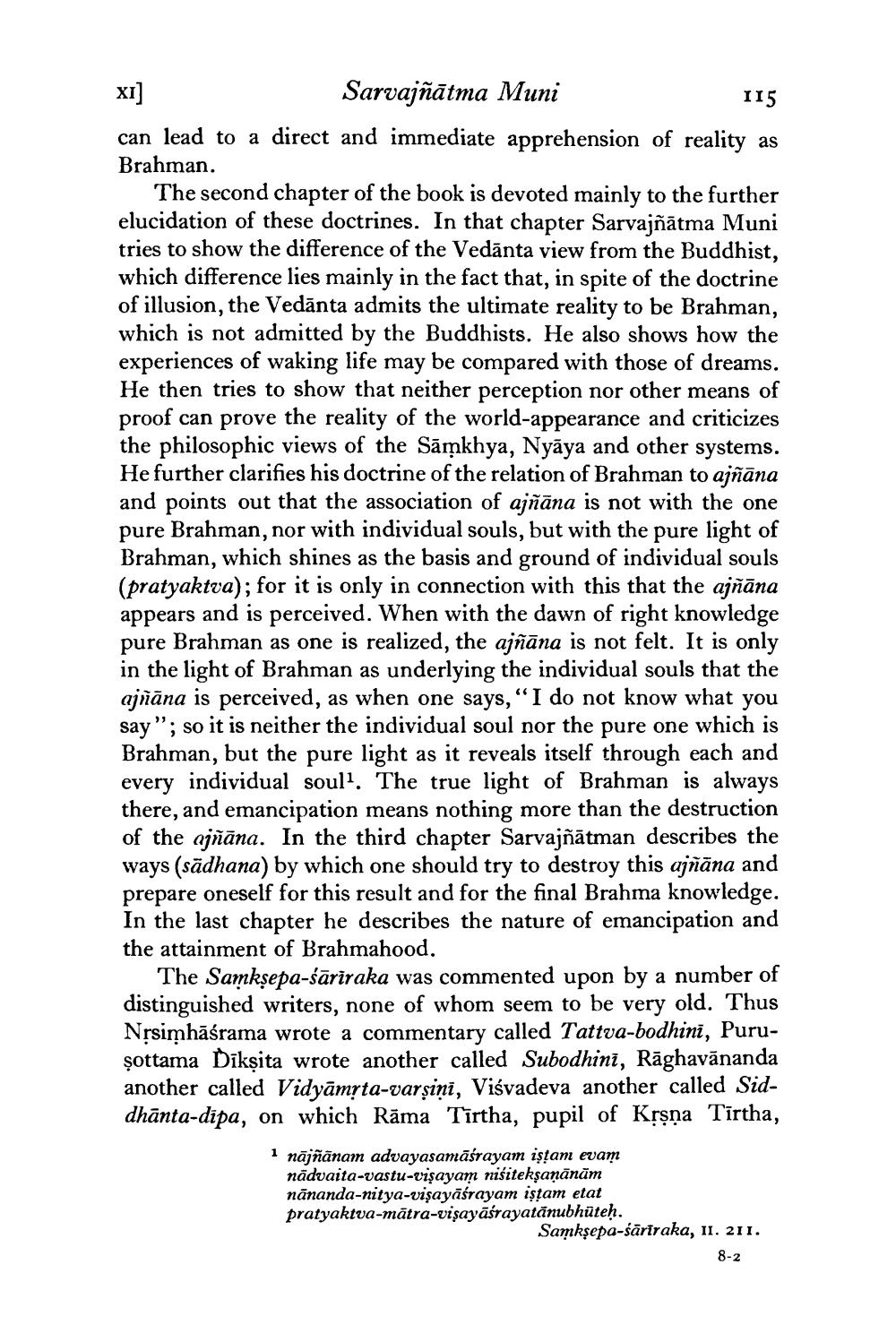________________
XI]
Sarvajñātma Muni
115
can lead to a direct and immediate apprehension of reality as
Brahman.
The second chapter of the book is devoted mainly to the further elucidation of these doctrines. In that chapter Sarvajñātma Muni tries to show the difference of the Vedanta view from the Buddhist, which difference lies mainly in the fact that, in spite of the doctrine of illusion, the Vedanta admits the ultimate reality to be Brahman, which is not admitted by the Buddhists. He also shows how the experiences of waking life may be compared with those of dreams. He then tries to show that neither perception nor other means of proof can prove the reality of the world-appearance and criticizes the philosophic views of the Samkhya, Nyāya and other systems. He further clarifies his doctrine of the relation of Brahman to ajñāna and points out that the association of ajñāna is not with the one pure Brahman, nor with individual souls, but with the pure light of Brahman, which shines as the basis and ground of individual souls (pratyaktva); for it is only in connection with this that the ajñāna appears and is perceived. When with the dawn of right knowledge pure Brahman as one is realized, the ajñāna is not felt. It is only in the light of Brahman as underlying the individual souls that the ajñāna is perceived, as when one says, "I do not know what you say"; so it is neither the individual soul nor the pure one which is Brahman, but the pure light as it reveals itself through each and every individual soul1. The true light of Brahman is always there, and emancipation means nothing more than the destruction of the ajñāna. In the third chapter Sarvajñātman describes the ways (sadhana) by which one should try to destroy this ajñāna and prepare oneself for this result and for the final Brahma knowledge. In the last chapter he describes the nature of emancipation and the attainment of Brahmahood.
The Samkṣepa-śāriraka was commented upon by a number of distinguished writers, none of whom seem to be very old. Thus Nrsimhāśrama wrote a commentary called Tattva-bodhini, Puruşottama Dikṣita wrote another called Subodhini, Rāghavānanda another called Vidyamṛta-varșini, Viśvadeva another called Siddhanta-dipa, on which Rama Tirtha, pupil of Kṛṣṇa Tīrtha,
1 nājñānam advayasamasrayam iṣṭam evam nādvaita-vastu-visayam nisitekṣaṇānām nananda-nitya-viṣayāśrayam iṣṭam etat
pratyaktva-matra-viṣayāśrayatānubhūteḥ.
Samkṣepa-sariraka, 11. 211.
8-2




